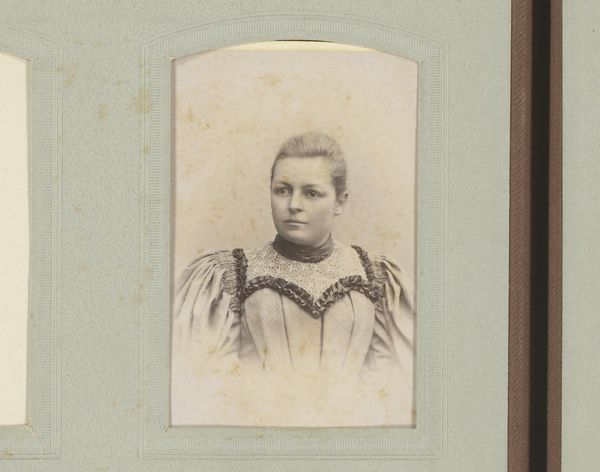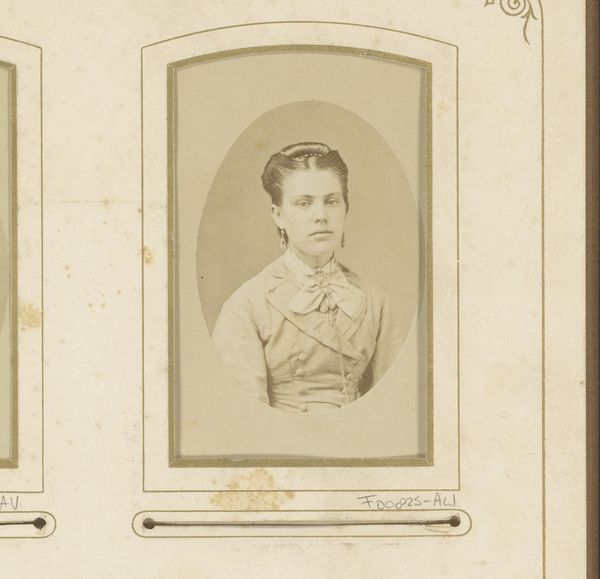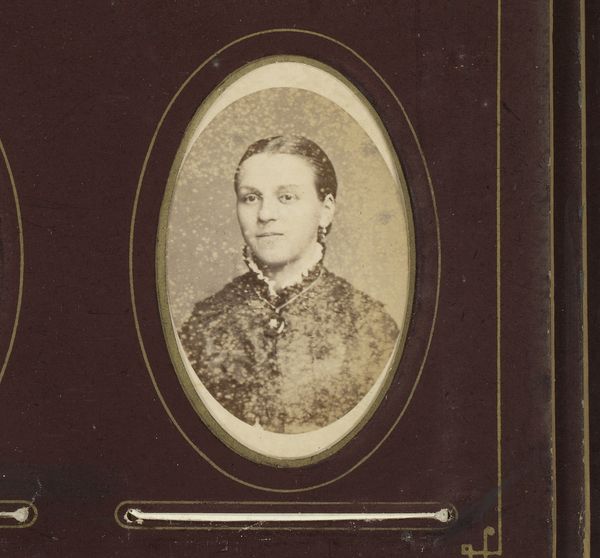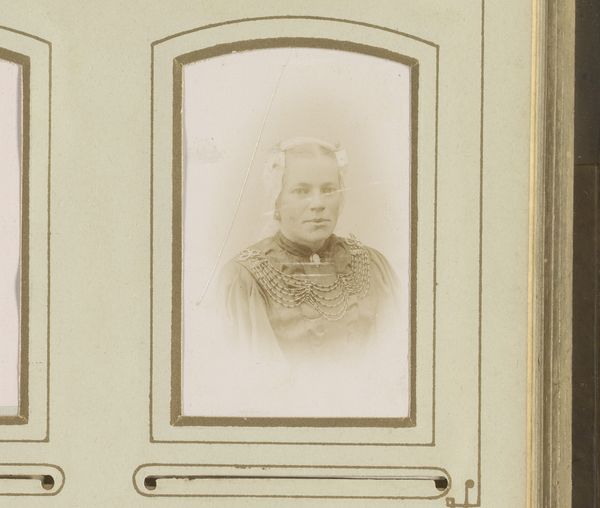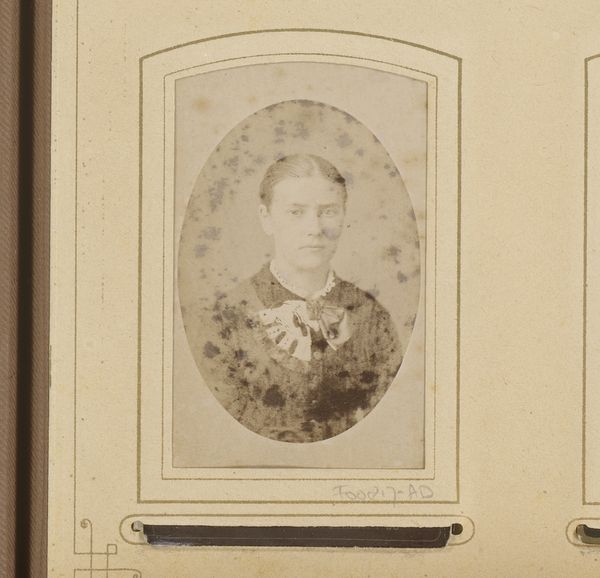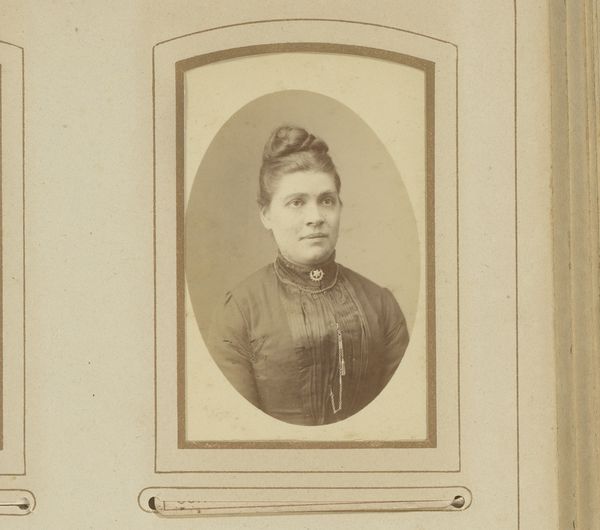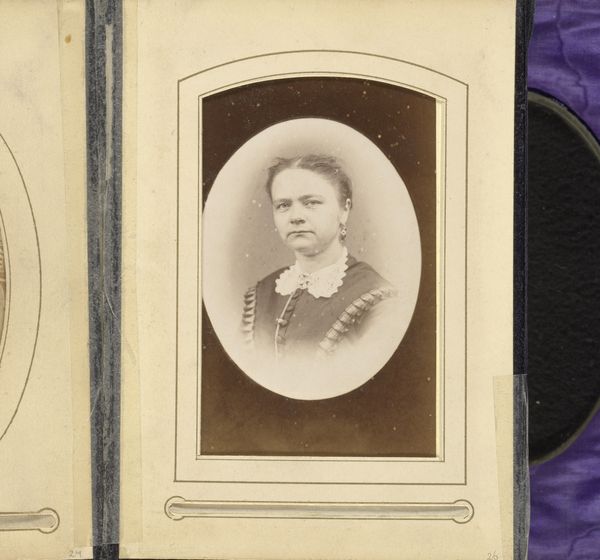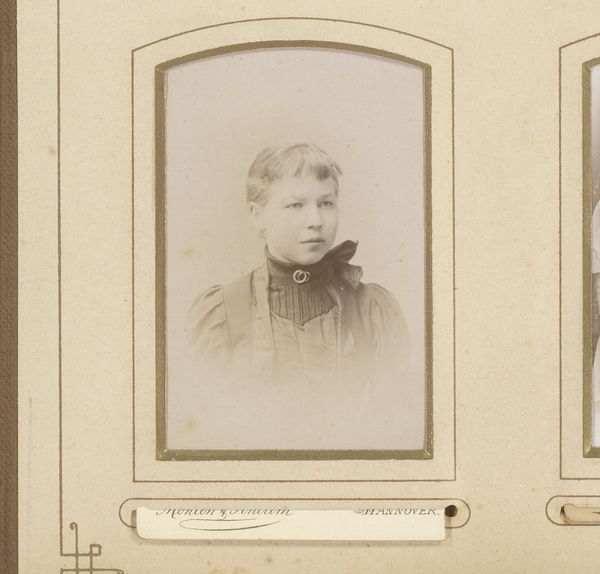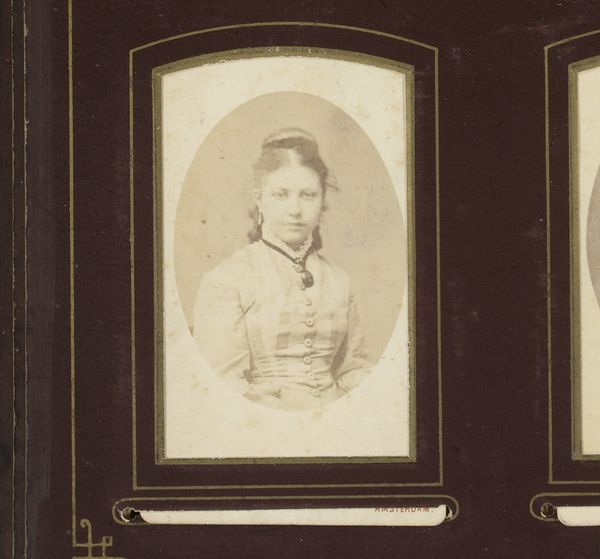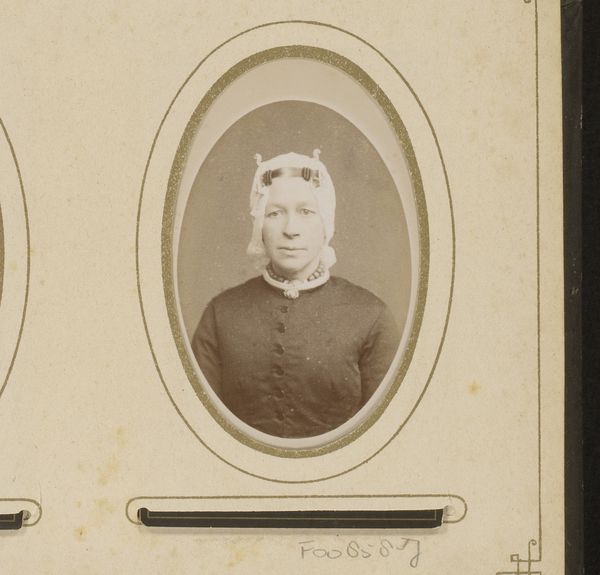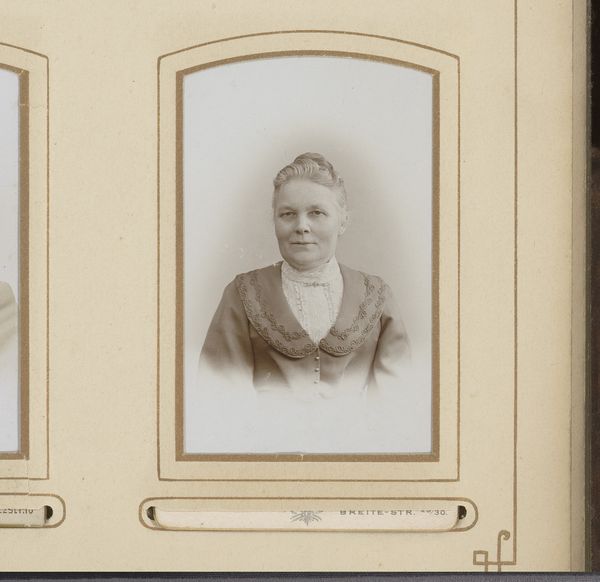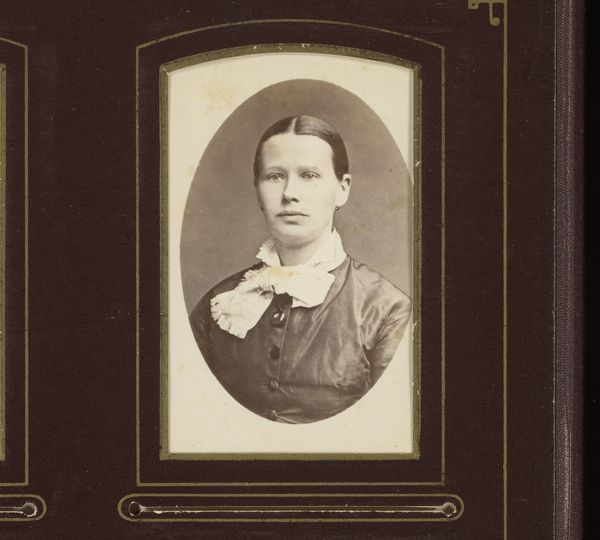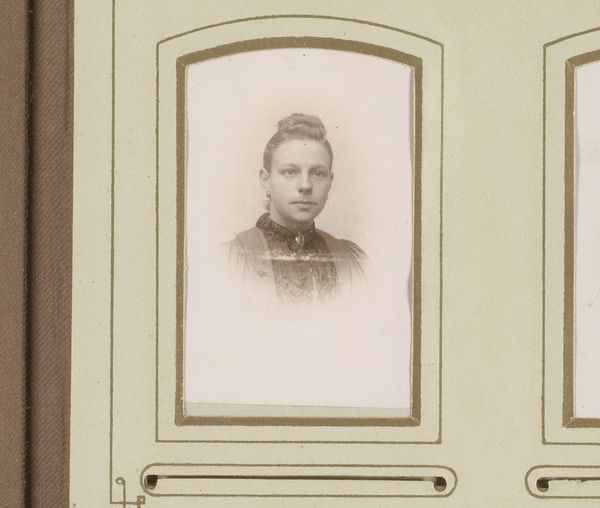
photography
#
portrait
#
photography
Dimensions: height 82 mm, width 50 mm
Copyright: Rijks Museum: Open Domain
Curator: The stark formality is what strikes me. It’s unsettlingly direct. Editor: Here we have a piece titled "Portret van een jonge vrouw," attributed to Johannes G.H. Beelenkamp and estimated to have been created between 1880 and 1912. The medium, photography, is important here, capturing a moment with an objective eye. Curator: Objective perhaps, but staged. Look at the oval frame—a sort of enforced elegance—and that incredibly stiff, lacy collar! It feels like she's being presented, almost like an offering. I wonder who she is and who she is meant for. Editor: I see it more as the conventions of the time dictating the pose and presentation. Portraiture in photography served to document social standing as much as personal likeness. The burgeoning middle class adopted such forms to announce their place within society. Curator: But what does that adoption signify on a deeper level? The subject's somber expression, the tight framing... it speaks to me of repressed desire, of social constraints binding her, literally, in lace. The photographer has chosen to represent youth burdened. Editor: Or simply youth positioned according to societal expectations. Beelenkamp may have been fulfilling a commission, capturing the subject as her family wished her to be seen: respectable, proper, ready for societal roles. It reflects more about what the patrons wanted others to think. Curator: Still, there’s something deeply resonant in how her gaze meets ours across time. The image isn't merely a reflection; it's a conversation across history—about who determines female identity, and the performative roles expected of women. What unspoken codes are transmitted from that pose onward? Editor: Perhaps those codes shift with each generation viewing her image, colored by our contemporary readings. Understanding its creation necessitates grappling with the prevailing cultural attitudes toward women during that era, recognizing how artistic expression can unwittingly reflect and solidify those attitudes. Curator: And hopefully, in our conversation about this image, the portrait allows for deconstructing those attitudes, too. Editor: Indeed, art serves as both a mirror and a lens.
Comments
No comments
Be the first to comment and join the conversation on the ultimate creative platform.
